Improve Communication Rapport in NLP
Bonding at an unconscious level.
Rapport is the quality of a relationship of mutual influence and respect between people.
A person does not have rapport until they have built a good relationship with another person.
NLP supplies the skills to build a respectful and mutually influential relationship by establishing and building rapport on different neurological levels.
Rapport is not manipulation. People who manipulate may look as if they are building rapport.
Rapport is not the same as friendship. Rapport is not agreement, nor does it come from agreement. It is possible to agree with someone and not have rapport. It is also possible to disagree with someone have rapport.
Rapport comes from taking second position.
When we take second position, we are willing to try to understand the other person from their point of view.
Satisfying relationships are built by rapport, not agreement.
How to build rapport:
By taking genuine interest in another person
By being curios about who they are and how they think
By being willing to see the world from their point of view.
Pacing and leading
To build rapport, begin by pacing another person. Pacing is when you enter the other person's model of the world on their terms. It is exactly like walking beside them at the same pace.
Once you have paced a person, build rapport and shown that you understand them, then you have a chance to lead them.
Leading is when you use the influence that you have built up from pacing.
Matching and mirroring
You pace and build rapport through 'matching'. Matching is when you mirror and complement an aspect of another person. It is not copying, it is more like a dance.By matching, you show you are willing to enter the other person's model of the world. They will intuitively perceive this and so you can feel more at ease with them and they will feel more at ease with you.
Matching can be done at every neurological level; like Environment, Behavior (Verbal/non verbal), capabilities, Beliefs/values, Identity,
Matching Physiology
Body movements: leg position, arm position, head position, rhythmic tapping of fingers, hands etc, gestures with hands, arms, head
Breathing pattern: speed, depth, location
Eye contact
Matching Voice tone
Speed of speech, Volume of speech, Tonality of speech, Pauses
Matching Language
Key words
Phrases and predicates

